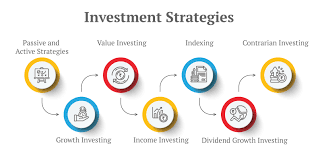The commercial real estate (CRE) market is a dynamic sector influenced by various factors, including economic conditions, technological advancements, and evolving business needs. As we move through 2024, the commercial real estate landscape is experiencing significant shifts. This article explores the latest trends in the commercial real estate market, providing insights into what investors, developers, and business owners should watch for in 2024.
1. Post-Pandemic Recovery and Adaptation

1.1 Shift in Demand for Office Spaces
The COVID-19 pandemic fundamentally altered the way businesses operate, leading to a rise in remote and hybrid work models. In 2024, the demand for traditional office spaces is evolving. Companies are reassessing their office needs, leading to increased interest in flexible workspaces, co-working environments, and smaller, more versatile office setups.
1.2 Increased Focus on Health and Safety
The pandemic has heightened awareness of health and safety in commercial spaces. Buildings with advanced HVAC systems, touchless technologies, and improved sanitation measures are in higher demand. Landlords and developers are investing in these upgrades to attract tenants and ensure compliance with new health standards.
2. Rise of Mixed-Use Developments
2.1 Integration of Residential, Retail, and Office Spaces
Mixed-use developments are gaining popularity as they offer a blend of residential, retail, and office spaces within a single property. This trend is driven by the desire for convenience and a more integrated lifestyle. Mixed-use developments create vibrant communities and reduce the need for long commutes, aligning with the growing preference for urban living.
2.2 Enhanced Community and Lifestyle Offerings
Modern mixed-use developments are designed with community and lifestyle in mind. They often include amenities such as parks, fitness centers, and entertainment options, providing residents and workers with a more comprehensive living experience. These developments aim to foster a sense of community and enhance the overall quality of life.
3. Technology and Innovation in Commercial Real Estate
3.1 Smart Buildings and IoT Integration
Technology is transforming the commercial real estate sector. Smart buildings equipped with Internet of Things (IoT) devices offer enhanced operational efficiency, energy management, and tenant comfort. Features like automated lighting, climate control, and security systems are becoming standard, contributing to cost savings and improved building management.
3.2 PropTech Advancements
Property technology (PropTech) is revolutionizing the way commercial real estate transactions and operations are conducted. Innovations such as virtual tours, AI-driven property management solutions, and blockchain for secure transactions are streamlining processes and enhancing the overall efficiency of the sector.
4. Sustainability and Green Building Practices

4.1 Growing Emphasis on Environmental Sustainability
Sustainability is a key focus in commercial real estate development. Green building practices, such as LEED certification and energy-efficient design, are increasingly prioritized. Investors and tenants are seeking properties that align with their environmental values, driving demand for sustainable and eco-friendly buildings.
4.2 Renewable Energy Integration
Integrating renewable energy sources, such as solar panels and energy-efficient systems, is becoming more common in commercial properties. This trend not only reduces operational costs but also supports corporate sustainability goals and attracts environmentally-conscious tenants.
5. Retail Sector Evolution
5.1 Adaptation to E-Commerce Growth
The retail sector is undergoing significant changes due to the growth of e-commerce. Traditional brick-and-mortar retailers are rethinking their strategies, focusing on experiential retail and omnichannel approaches. Retail spaces are being reconfigured to accommodate click-and-collect services, return centers, and enhanced customer experiences.
5.2 Emphasis on Experiential and Destination Retail
Retailers are increasingly focusing on creating unique, immersive experiences to attract customers. Experiential retail spaces that offer interactive and engaging activities are becoming more popular. These spaces aim to create memorable experiences and drive foot traffic to physical stores.
6. Industrial Real Estate Trends
6.1 Growth in E-Commerce and Logistics
The rise of e-commerce has significantly impacted the industrial real estate sector. Warehousing and distribution centers are in high demand as businesses seek to streamline their supply chains and improve delivery efficiency. Industrial properties near major transportation hubs and urban centers are becoming increasingly valuable.
6.2 Automation and Technology in Warehousing
Automation and advanced technology are transforming warehousing and logistics operations. Robotics, AI-driven inventory management, and automated sorting systems are enhancing efficiency and reducing operational costs. Industrial properties equipped with these technologies are highly sought after by logistics companies.
7. Global and Regional Market Trends
7.1 Economic and Political Influences
Global economic conditions and political developments influence commercial real estate markets. In 2024, factors such as inflation rates, interest rates, and geopolitical events will impact investment decisions and market dynamics. Investors and developers must stay informed about global and regional trends to make strategic decisions.
7.2 Regional Market Variations
Commercial real estate trends can vary significantly by region. Major metropolitan areas may experience different trends compared to secondary and tertiary markets. Understanding local market conditions, demographic trends, and regional economic factors is crucial for making informed investment decisions.
8. Investment Strategies and Opportunities

8.1 Diversification and Risk Management
Diversification is a key strategy for managing risk in commercial real estate investments. Investors are exploring various asset classes, including office, retail, industrial, and mixed-use properties, to spread risk and capitalize on emerging opportunities. Understanding market trends and aligning investments with long-term goals is essential for success.
8.2 Exploring Emerging Markets
Emerging markets and secondary cities offer attractive investment opportunities due to lower entry costs and potential for high returns. Investors are exploring these markets to identify undervalued properties and capitalize on growth potential. Conducting thorough research and due diligence is crucial for identifying promising investment opportunities.
Conclusion
The commercial real estate market in 2024 is characterized by evolving trends and dynamic shifts. From the impact of the post-pandemic environment to advancements in technology and sustainability, the sector is adapting to meet changing demands and opportunities. By staying informed about market trends, leveraging innovative technologies, and adopting strategic investment approaches, stakeholders can navigate the commercial real estate landscape successfully. Whether you’re an investor, developer, or business owner, understanding these trends will help you make informed decisions and capitalize on emerging opportunities in the commercial real estate market.


